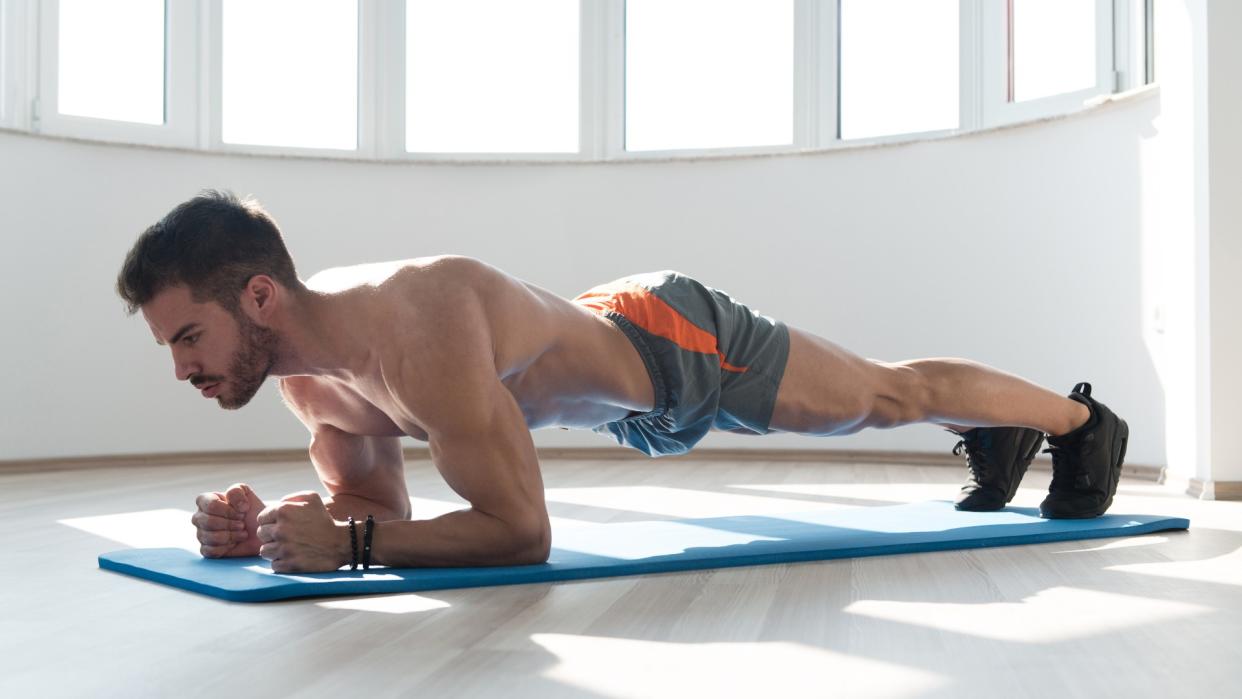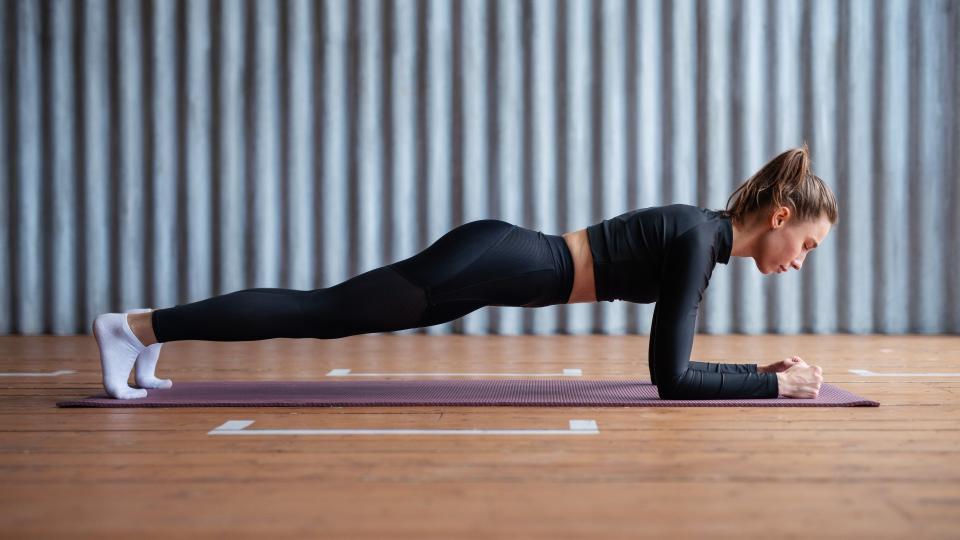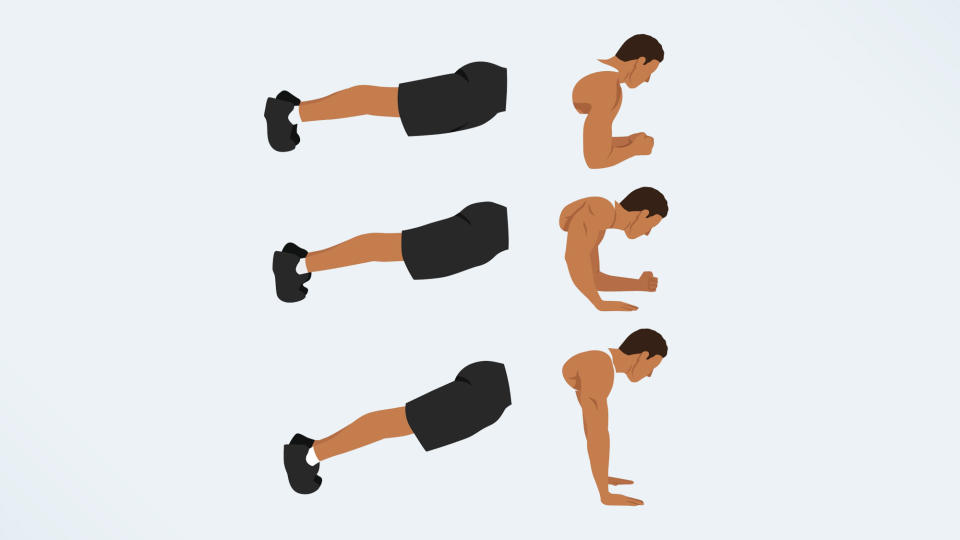Commando planks: How to do them, and the benefits for strengthening your core

There’s barely a stone left unturned when testing plank variations at Tom’s Guide, but commando planks are one of the best we’ve tried. Also referred to as moving planks, up-down planks, military planks and walking planks, the move torches muscle groups from head to toe.
To do commando planks, simply move from a high plank position to the forearms and back again without swinging, lifting or dipping your hips. Easier said than done, but if you get your form on point, the move carries plenty of benefits.
Below, we cover how to do commando planks with proper form and the most common mistakes you’ll come across when trying them. We also discuss the benefits of commando planks and why the core exercise is so effective at strengthening your core muscles. Also, here are the best yoga mats to do your planks on.
Commando planks: Benefits
Commando planks target and strengthen muscles in your core, shoulders, back, chest, glutes, hamstrings and quad muscles. Most people note more emphasis on the shoulders than other variations.
Stationary planks use an isometric contraction, which means muscles are under tension without flexing or extending, but the commando plank adds upper-body movement to challenge muscles further. The mix of isotonic and isometric exercise means that some muscles will activate to stabilize your body (like your core muscles), while others (in your arms) lengthen and shorten.
A commando plank is technically a compound exercise, targeting various muscle groups, and could improve posture by strengthening the muscles around the spine along with your other core muscles. You can learn more about the plank exercise and muscles worked here.

Another benefit of commando planks is their ability to raise your heart rate, which makes them a great addition to high-intensity cardiovascular workouts. You can try the move anywhere without any equipment or weights, which means the plank variation is as efficient as it is effective.
Find out what happened when I did 90 commando planks every day for a week.
How to do commando planks

Here’s how to do this plank variation properly.
How:
Start in a plank position on your mat with elbows extended, shoulders over wrists, and hips in line with your shoulders
Squeeze as many muscles as possible and gently suck your belly button toward your spine
Lower your left elbow onto the mat underneath your left shoulder, then your right
Pause in a forearm plank position, then press upward and place your left palm back onto the mat beneath your left shoulder, followed by your right
Repeat, and switch your leading arm each time. Lower your knees for extra support if necessary.
Commando planks: Common mistakes

Commando planks help strengthen your lower back, glutes and hamstrings, encouraging better posture and protecting your spine. But doing them wrong could lead to injury. These are the most common mistakes we see.
Hip action
Commando planks require stability, coordination and balance as you move one side of your body at a time. Whether you’re new to the exercise or you’ve clocked up hundreds of reps, keep an eye on your hips. They should always be square to the mat, without swinging from side to side. Avoid dipping your hips below shoulder height or pushing your bum toward the ceiling.
Lack of muscle engagement
Planks and their many variations aren’t just core exercises. Practice contracting as many muscles as possible, including your core, glutes, legs, back, chest and shoulders.
If you struggle, try creating a mental checklist from head to toe and gently squeeze each muscle group as you bring awareness to them. We spoke to calisthenics coach Jase Robinson, who created this calisthenics workout, and he mentions compound contraction — contracting muscles simultaneously — using the three B's: back, belly and bum.
By focusing on conscious contraction of the bigger muscle groups, you should also be able to contract smaller muscles subconsciously.
Holding your breath
When practicing a tough exercise (particularly an isometric move like a plank), people tend to hold their breath. Try to use diaphragmatic breathing instead, which is an expansive breath rather than restrictive. Your abdominal muscles aid your diaphragm, and the dome-like muscle technically counts as part of your network of core muscles.
According to the Cleveland Clinic, the expansive breathing method should help strengthen the diaphragm, reduce blood pressure and aid relaxation.
Commando plank: Variations
You could lift one leg into the air at a time to challenge your balance or focus on building reps. If programming them as part of a resistance session, start with 6-8 reps and 2-3 sets, then gradually increase the reps over time.
If you’re comfortable with the exercise and want to mix it up, practice achieving max reps within a given time cap as part of a high-intensity session. For extra resistance, place a weight on your mid-upper back or try a weight vest.
I recommend a weighted vest to make bodyweight exercises harder but avoid adding them to aerobic exercises, as they place extra load on your joints. If you have issues with weight-bearing activities, consider giving them a miss.

